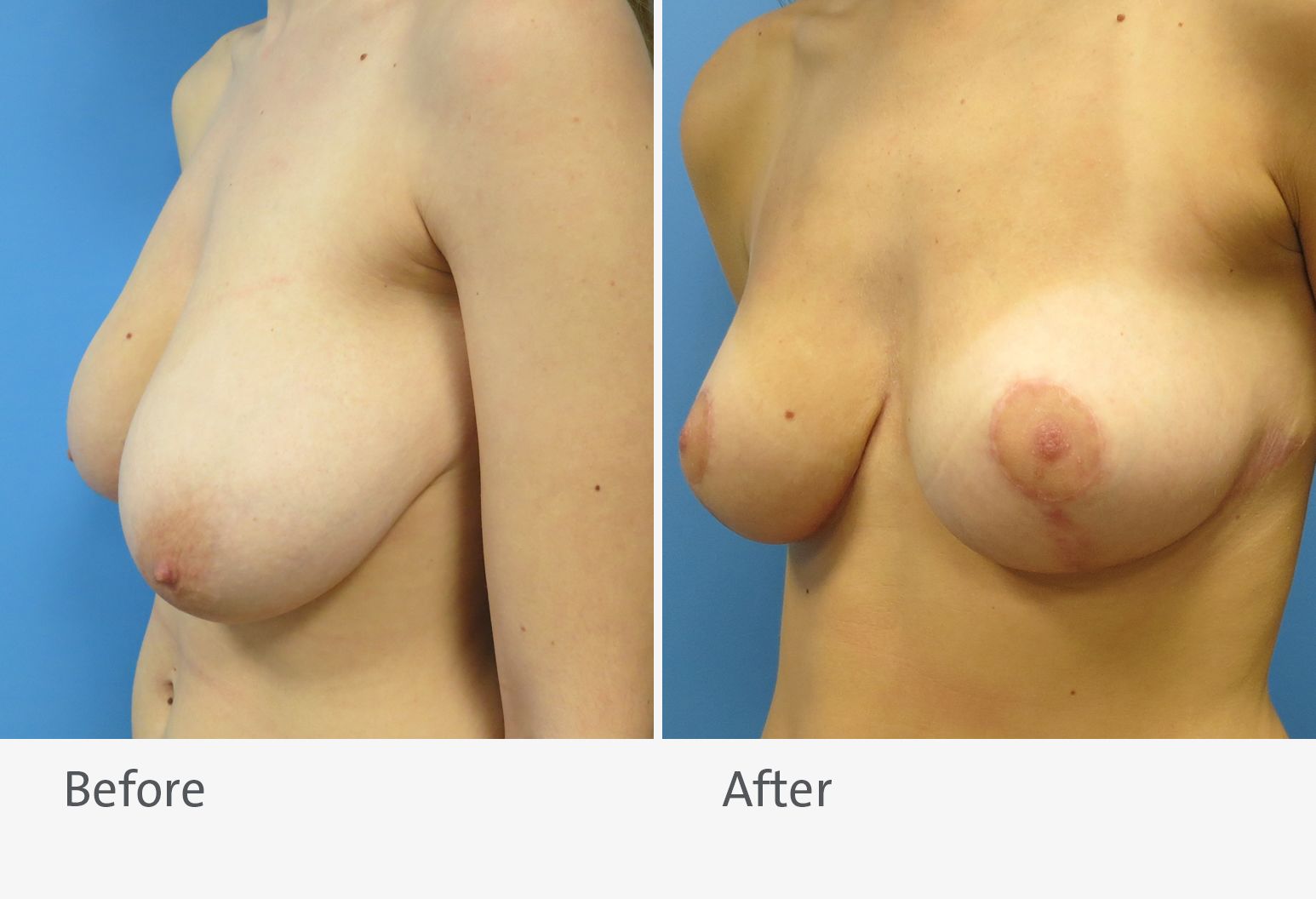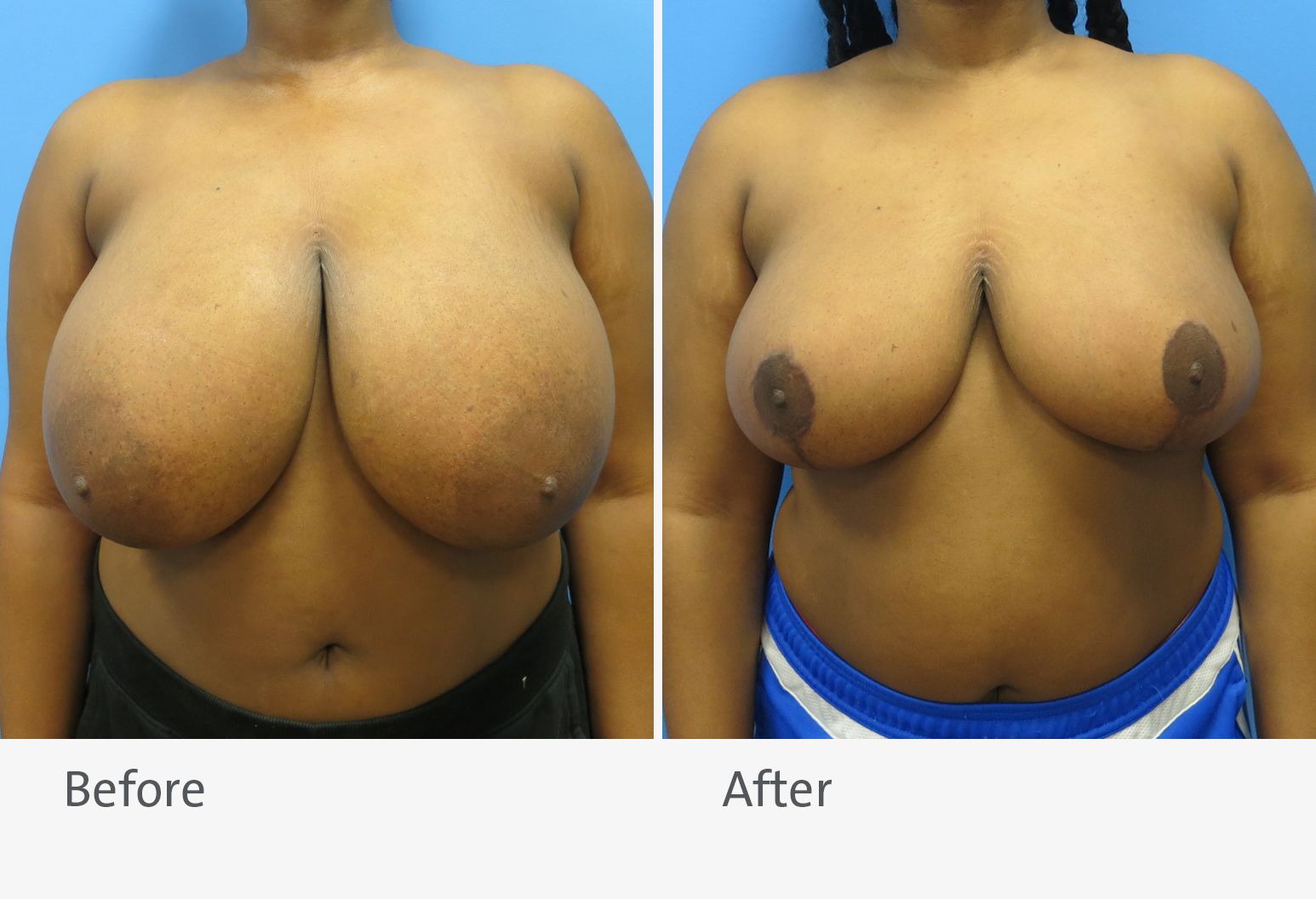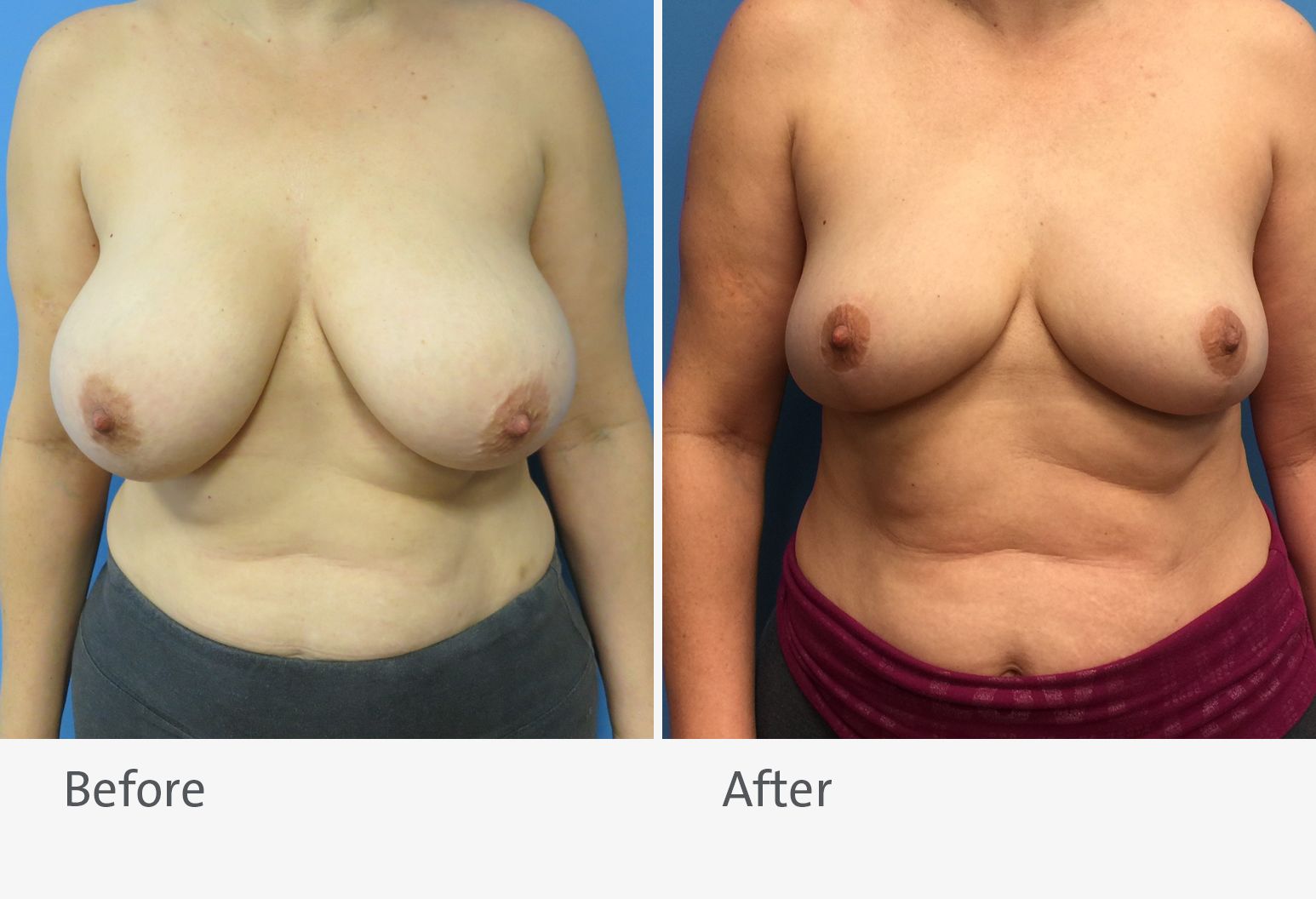Breast reduction
What is breast reduction?
Some women find that their breasts are too large and cumbersome, or do not look proportionate to the rest of their body. Breast reduction, also known as reduction mammoplasty, involves the surgical removal of some of the fat, tissue and skin from the breasts to reshape them and reduce their size. This surgery will alleviate any discomfort from very large breasts and give a more natural look. Many breast reduction procedures are covered by your insurance.
Good candidates for breast reduction surgery include women who:
- Have realistic expectations
- Are bothered by feelings that her breasts are too large
- Have breasts that limit physical activity
- Experience back, neck and shoulder pain
- Have shoulder indentations from bra straps
- Have skin irritation beneath the breast crease
What to expect
During a thorough consultation, your physician will perform a physical exam, take a full medical history, ask you about medications you may be taking and any conditions you currently have, take photographs, and discuss your expectations for the surgery. In addition, you may ask your physician any questions and discuss concerns you may have about breast reduction at this time. Together, you will develop a treatment plan that’s tailored to your individual needs and desires.
During the surgery, incisions will be made in your breasts and your surgeon will remove excess fat, tissue and skin. The particular technique used will depend on your individual breasts and your desired outcomes. Techniques include:
- A circular pattern around the areola. The scars that remain from this technique are usually well concealed beneath a swimsuit or bra
- A keyhole pattern with incision around the areola that continues vertically down the center of the breast
- An inverted T or anchor-shape
Once the incision has been made and the excess skin has been removed, the nipple, which remains connected to the original blood and nerve supply, is repositioned. If necessary, the areola size can be reduced. The underlying breast tissue is then lifted and repositioned. The flaps of skin are sutured together to create the smaller breast.
Complications
Complications from breast reduction are minimal and include those associated with any surgery, such as infection, excessive bleeding and anesthesia risks. In addition, risks for breast reduction surgery include:
- Decreased nipple sensation
- Scarring
- Asymmetry
- Temporary or permanent changes in breast or nipple sensation
- Poor wound healing
- Contour and shape irregularities
- Skin discoloration, permanent pigmentation changes, swelling and bruising
- Fluid accumulation
- Potential decreased ability to breastfeed
It is important to note that breast reduction surgery can interfere with certain diagnostic procedures. In addition, changes in the breasts during pregnancy or after weight loss can alter the outcomes of breast reduction surgery.
Recovery
The results of a breast reduction are immediately visible. Over time, swelling and incision lines will fade.
Immediately following your breast reduction surgery, you will be taken into a recovery area for close monitoring. Your breasts will be wrapped in gauze dressings and a support bra to minimize swelling and support the breasts during the healing process. You will need to wear this garment as instructed by your physician.
You will be prescribed pain medication and an antibiotic to prevent infection.
Before being discharged from the hospital, you will be given postoperative instructions by your surgeon. It’s very important that you follow these instructions carefully to avoid complications.
While everyone’s recovery is different, you can expect to wear the supportive garment for three to four weeks. You will need to take it easy until your surgeon tells you it’s OK to resume normal activity, usually after four to six weeks.
Frequently asked questions
What is the ideal age to have this surgery?
The ideal age depends on when the issue becomes a problem for the patient. The only requirement is that the patient has finished growing.
How long until I can be active again after my surgery?
Every surgeon has different views about when it is OK to get back to your normal routine. Talk to your physician about what is right for you.
Can I breastfeed after a breast reduction?
Whether you can breastfeed after a breast reduction may be related to the amount of breast tissue that remains after the surgery.
Before and after gallery
Beautiful results you can see

Plastic surgery can change the way you look and feel. See the difference our doctors can make.

This procedure was done by Dr. Tanna.

This procedure was done by Dr. Tanna.

This procedure was done by Dr. Tanna.

